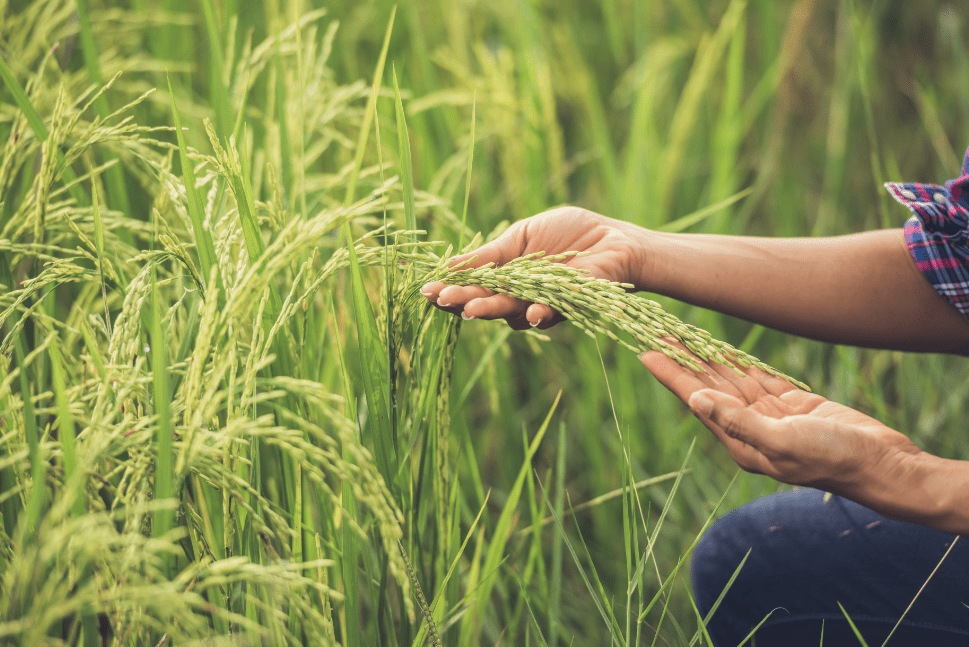The article is contributed by EOS Data Analytics, an AI-powered satellite analytics platform helping farmers to speed up the decision-making process.

Agriculture is not merely a business that brings profit to farmers. It is literally vitally important for humankind as it supports our food needs. However, with the indisputable necessity of agribusiness, it is essential to make it as least harmful to nature as possible.
This eco-friendly approach gave rise to agroecology that emerged at the junction of sciences. However, it does not solely combine ecology and agriculture, as the name suggests. It takes the best from agronomy, computer sciences, social studies, economics, among others. The concept aims to improve nature conditions and people's welfare, involving political, cultural, social, and economic changes.
What Does Agroecology Imply?
Agroecology explores the ways ecological processes apply to farming. This way, crop and animal production will acquire new positive traits beneficial to nature. What is more, it aims to preserve the originally existing ecosystems with minimal environmental impact, thus maintaining biodiversity, soil health and ensuring close-to-natural habitats and livestock breeding conditions. In this regard, agroecology connects to regenerative agriculture, organic and no-till farming, precision agriculture, contributing to sustainability.
The term "agroecology" belongs to Basil Bensil, an American agronomist of the early 20th century. The notion was first introduced in 1928, referring specifically to applications of ecological processes in farming. Later it became an object of ardent discussions. At the dawn of the new millennium, it earned particular significance and embraced broader meanings. Nowadays, agroecology comprises the entire food production process (growing, distribution, production) and considers all related social, economic, and ecological aspects.
Principles Of Agroecology
Agroecological principles can be categorized according to the key spheres they affect: environmental or ecological, cultural and social, economic, and political.
Environmental Aspect
Agroecology favorably influences nature by increasing the mutual benefits of agroecological and food supply systems. It provides similar-to-natural conditions for biological communities and sustains environmental resources. It advocates:
- maintaining soil health with organic matter and manure;
- eliminating chemical contaminations with non-chemical methods: organic fertilizers;
- integrated weed and pest management, crop rotation, prevention measures, etc.;
- preventing erosion with cover crops, no-till farming, buffer zones, windbreaks;
- recycling wastes whenever possible;
- decreasing greenhouse gas emissions by carbon sequestration;
- increasing biodiversity;
- addressing climate change issues.
Cultural And Social Aspect
Agroecology supports ingenious knowledge, local farming, and centuries-old soil cultivation traditions without heavy industrial impact. Yet, it refines the existing experience with recent scientific and technological findings to minimize negative human influence and facilitate efforts.
The agroecological concept suggests:
- growing seasonal vegetables and fruits specific for the region;
- encouraging farmer-to-farmer communication to share experience;
- allowing job opportunities for local people and improving their welfare;
- welcoming cross-gender and cross-national connections.
Economic Aspect
Agroecology improves the economic climate of the region and improves life quality for all food supply chain participants by:
- shortening producer-consumer chains;
- ensuring better food quality with fresh and organic food;
- stimulating the development of local markets;
- regulating and establishing fair prices;
- promoting community independence and self-sufficiency.
Political Aspect
Agroecology contributes to a favorable political environment in the region:
- enabling decision making by ordinary people;
- re-arranging the sphere of influence of big and small producers;
- assisting in governmental decentralization;
- helping local communities realize their full potential.
Transition Options
Farmers recognize precision agriculture as one of the most efficient ways to switch to agroecological practices. Simply put, precise farming adds accuracy and credibility for weighted and smart agricultural decisions. Thus, differentiated field treatment prescriptions help farmers mitigate adverse environmental impacts due to chemical leakage and reduce cost inputs. Typical technological findings to support farmers' needs include agricultural software, GPS-navigated equipment, robotics, remote sensors, aerial and satellite imagery, to mention a few.
- Remote sensing technology was adopted in agriculture in the late 1960s and got a vast span in recent decades. Nowadays, it is widely used to monitor fields and assess crops, make predictions, and analyze productivity.
- GPS soil sampling performs soil tests to estimate plant growing conditions like soil moisture and temperature, nutrient content, etc. It allows making necessary adjustments to improve soil quality and choose the optimal time for field activities.
- IoT comprises numerous advancements to make a farmer's life easier. Smart software calculates inputs of fertilizers, pesticides, herbicides, fuel, provides weather data and forecasts, alerts agronomists to danger and risks.
- VRT seeding suggests performance-based rates. The variable rate technology also applies to the distribution of chemicals enabling farm owners to reduce expenses and contribute to nature protection.
Transition to agroecology has fundamental benefits as technological innovations simplify agronomic efforts. However, agroecological adoptions strongly rely on technical possibilities of the region, including smartphones and internet connectivity. This involves a reasonable correlation of edgy discoverings and ways of their implementations.
You may also like
Gardening Tips: Best Ways to Maximize Your Harvest
13 Ways to Maintain a Healthy Flower Garden
Natural Pest Control: 5 Strategies for Your Garden
Gardening Tips For Beginners: Things You Need To Know Before Sowing Your First Seed
